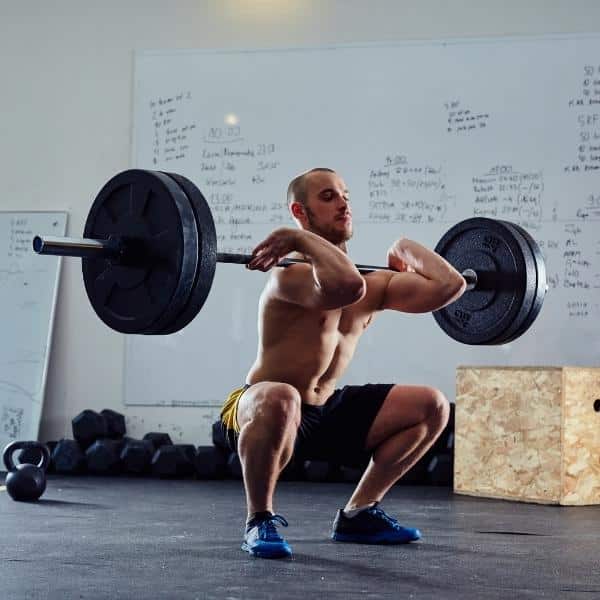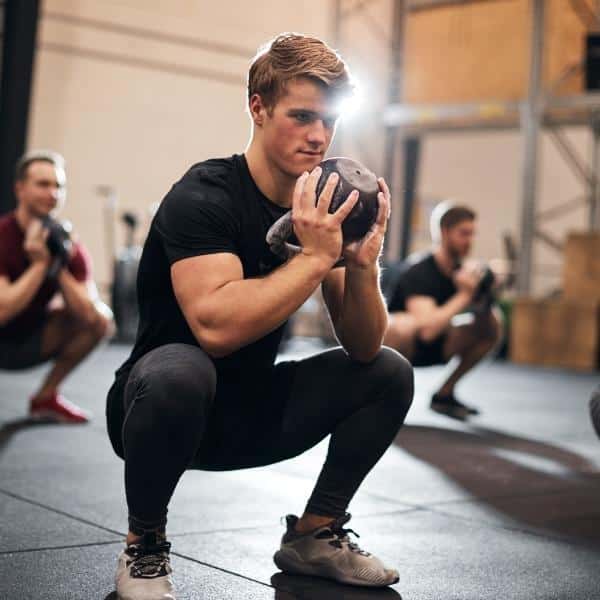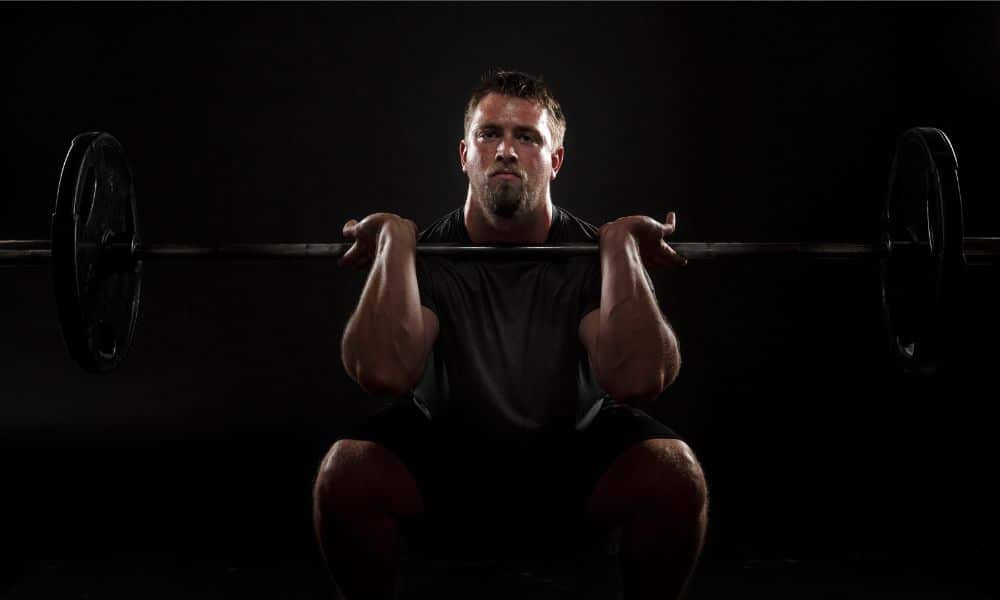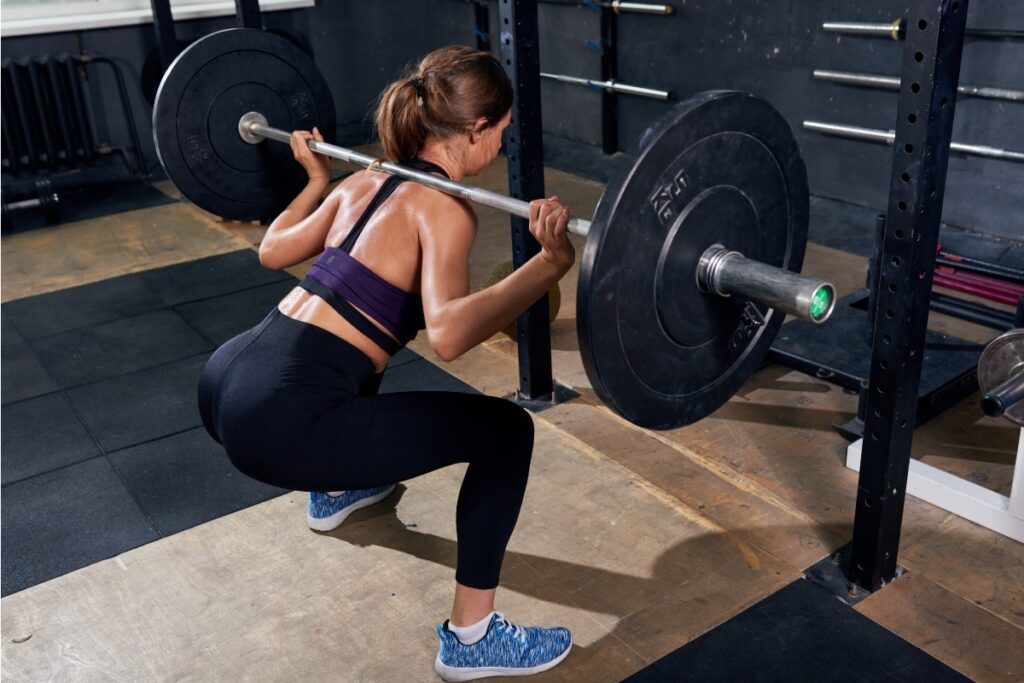Squats are one of the best full-body exercises you can do. They work your legs, core, and back and help build strength and power. But squats aren’t just for backyards or gyms; there are several variations that you can do almost anywhere. A front squat is an excellent option for building strength in your lower body, especially if knee or ankle issues make it challenging to perform standard back squats (or if you want a change from the routine). Here’s how to do front squats:

What is Front Squat?
A front squat is a variation of the standard barbell squat. The barbell is held across your shoulders, in a position where it rests on your deltoids rather than your back. This allows you to use more weight since you don’t have as much body mass supporting the weight as when you back squat.
To do a front squat, stand with feet shoulder-width apart and hold a barbell across your upper chest with an overhand grip—a grip where palms face away from you (or “supinated”).
How to Do a Front Squat?
The front squat is a great way to build upper body strength and improve core stability. For the most part, it’s pretty simple—but if you do it wrong, your back will be in trouble!
Push hips back so that you lower into a squat position until thighs parallel the floor. Keep knees aligned with feet, and don’t let them go beyond toes. Return to standing by pushing through heels; repeat for the desired number of reps or sets (usually 3-5).

Front squat vs. Back squat
When your front squat, you must keep your torso upright and arms straight. If you allow your torso to lean forward, the bar will hit the top of your thighs and cause pain.
The back squat allows for more freedom of movement in the hips and shoulders, allowing for a more excellent range of motion (ROM). The front squat targets mainly quadriceps muscles, while back squats target gluteus maximus (glutes) muscles and hamstrings. In addition, it can be argued that since there’s less ROM involved in a front squat than in a back squat, there are potential benefits for those who wish to build muscle mass on their upper legs (quadriceps).
Benefits of Front Squats
Front squats are an excellent exercise for building muscle, and they’re also really good at building strength, power, flexibility, and endurance.
The front squat works your quads, hamstrings, glutes, and core muscles—which is why it’s an effective exercise for improving overall strength and fitness.
It may Improve Athletic Performance.
Front squatting is an excellent way to improve athletic performance. If you’re a serious athlete, you probably already know that your vertical jump and sprinting speed are essential factors in your ability to win competitions.
The front squat is also great for building core strength and balance. It can help you develop a strong core, improving your ability to run fast or jump high by increasing the power generated from the ground up through your entire body.
It’s Easier on Your Knees and Back.
It’s easier for your knees and back to handle the weight. Front squats put less stress on your knees, lower back, and upper back because they have to work less complicated than in the regular squat. This makes them more appropriate if you have knee or lower back problems. The front squat is also a safer movement for those with neck issues because there is no weight pulling down on their head as there would be during a regular squat.
It Trains Several Major Muscle Groups.
The front squat targets your quads, glutes, and core muscles differently than the back squat. It requires you to keep your torso upright and use the muscles of your core and upper body to maintain balance throughout the movement. You’ll be able to lift less weight than you would with a back squat, but this form increases stability and muscle recruitment throughout the legs.
The front squat is also an excellent alternative when recovering from injuries or developing strength because it minimizes knee pressure while still targeting all those key muscle groups!

Alternatives to Front Squats
For those who don’t want to front squat, several alternative exercises can help mimic the benefits of this exercise.
Back Squats:
These are like any other version of the classic lift, except you’re facing away from the barbell and lifting it over your head in an upright position instead of behind your neck. The key benefit here is that it makes things easier on your shoulder joints because they’re not having to compensate for an awkward angle when holding weight overhead in an unstable position. The downside is that you’ll need a little more space than usual when performing these and some extra mobility to get into position comfortably.
Overhead Squats:
These are similar to back squats but with even less room needed since they’re performed standing up straight instead of bending over at all times through every part of their execution (this makes them slightly easier on your lower back too). If this sounds like something you’d prefer to do, then definitely give it a try!
Box Squats:
Box squats involve using boxes or benches so that each rep starts from different heights depending on how long its descent lasts before hitting bottom again—they’re great for developing explosive hip power without having heavy weights hanging from around one’s neck all day long as traditional barbells do during regular sets based solely off repetitions rather than weight per set (i.e., 20 reps x 5 sets vs. ten reps x 2 sets).
The Last Word on the Front Squat
So there you have it—everything you need to know about the front squat. It’s an excellent exercise, and we hope this article helped clear up any questions you had about how to do it. If you’re looking for an alternative to regular squats, consider trying out some of our suggestions!




